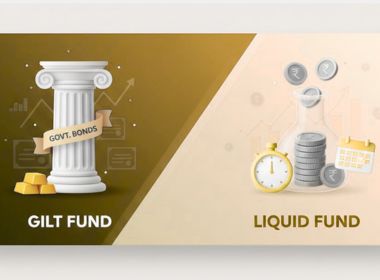Search Suggestions
- Gold Loan
- Money Transfer
- Mutual Funds

Equity Linked Schemes
What is Equity Linked Savings Scheme (ELSS)?
Equity Linked Savings Scheme (ELSS) is a type of diversified equity mutual fund scheme that invests in the stock s of different companies. Under section 80C of the income tax act, investments up to 1.5 lakhs are eligible for a tax deduction.
How to Invest in Equity Linked Savings Scheme?
You can invest in ELSS tax saver mutual fund using an online investment service account. You can invest in ELSS as a lump sum or systematic investment plan.
Who Can Invest in ELSS?
Anyone can invest in ELSS MF schemes the same way that of other Mutual Fund scheme. Using an online investment mode is very easy and convenient.
Key Factors to Know Before Availing an Equity Linked Savings Scheme
There are several things that need to be taken into consideration before investing in ELSS mutual funds. Here is a list of things that you need to keep in mind when investing in ELSS:
Fund returns:
Make sure you do some research about the ELSS funds in which you are planning to invest. If the fund has shown consistent performance in the past then it will most likely bring in decent huge returns. Always look for the best ELSS funds.
Expense ratio:
It is highly recommended that you choose a fund that has a low expense ratio. It means you will have comparatively more higher returns.
Fund manager:
It is important to have an expert fund manager since they are going to manage your funds.
Advantages and Disadvantages of ELSS
Equity-linked mutual funds have plenty of advantages as well as disadvantages. Here’s a look at the advantages and disadvantages of ELSS Mutual Funds:
Shortest Lock-in:
ELSS has a lock-in period of three years which is less than tax-saving fixed deposits and PFF.
Higher returns:
In ELSS the returns are linked with the market fluctuation which sometimes can result in significantly higher better returns, unlike any other fixed-income products like PPF or FDs.
Best Post Tax Returns:
ELSS has a low tax rate which combined with higher returns makes it the best post-tax return option for investment.
Disadvantages of ELSS
High-Risk ELSS Funds:
ELSS returns depend on the market performance which can fluctuate causing loss and gain.
ELSS Liquidity:
The lock-in period of 3 Years months might be a problem for some investors since they can’t get their money back until that time period ends.
Limited benefits:
Investors can only avail the tax benefit up to 1.50 Lakhs regardless of how much they invest which can be quite disappointing for some investors.
Management cost:
Like other Mutual Fund Schemes ELSS mutual funds are also managed by fund managers. There will exist a fee for their Management of Funds. The charging fee can multiply over a certain period of time eventually affecting your returns as well.
What are the Options Available for Investment in ELSS?
There are plenty of options available for people interested in investing in ELSS. Here is a list of options for ELSS investment:
Growth option:
If you opt for the growth option then you will only get the returns at the time of redemption.
Dividend option:
If you choose the dividend option then you will get benefits regularly. However, dividend is only given in case the profits exceed a certain limit.
Dividend Reinvestments option:
This option allows the investors to reinvest their dividends when the market is going upward.
Features of Equity Linked Savings Scheme
ELSS is considered to be one of the best forms of investment for people looking for options to invest. Here is a list of features of ELSS:
Tenure:
ELSS has a lock-in period of 3 years
Returns:
The returns depend on the market performance which can fluctuate.
Risk:
The markets can be quite volatile which makes them a high-risk investment.
Tax Exemption:
In ELSS investors can avail a tax exemption of up to Rs 1.50 Lakh. ELSS mutual fund tax benefits are one of its key features.
Refer a Friend*
Refer a friend & get a Chance to
Win Exciting Muthoot Group Merchandise
*T&C apply

Ask an Expert
NORTH, EAST & WEST INDIA TOLL-FREE NO.:
1800 313 1212
SOUTH INDIA CALL CENTRE NO.:
99469 01212
WRITE TO US:
mails@muthootgroup.com
BRANCH TIMINGS:
Mon-Sat, 9:30 AM to 6 PM


Ask an Expert
NORTH, EAST & WEST INDIA TOLL-FREE NO.:
1800 313 1212
SOUTH INDIA CALL CENTRE NO.:
99469 01212
WRITE TO US:
mails@muthootgroup.com
BRANCH TIMINGS:
Mon-Sat, 9:30 AM to 6 PM

FAQs
Investors can avail of the tax benefit of up to Rs 1.50 lakhs by investing in ELSS mutual funds.
ELSS offers an opportunity to get better huge returns for your investment in comparison to other fixed deposit options like PPF and FDs.
ELSS is an ideal investment option for income tax paying individuals especially salaried individuals who are looking for reduction is the tax component and also to get better huge returns on their investments.
An Equity-Linked Saving Scheme (ELSS) is a type of mutual fund that invests a major part of its corpus into equity or equity-related instruments. These funds are also called tax-saving schemes as they offer a tax exemption under Section 80C of the Income Tax Act, allowing you to claim a deduction of up to ₹1,50,000 from your annual taxable income. ELSS also comes with a mandatory lock-in period of three years.
Both ELSS and FD (Fixed Deposit) have their own advantages and disadvantages. ELSS offers the potential for higher returns but comes with higher risk and a lock-in period. It also has a shorter lock-in period of three years and provides tax benefits under Section 80C. FD, on the other hand, offers guaranteed returns with low risk but has a longer lock-in of five years. Ultimately, the choice between ELSS and FD depends on your risk appetite and financial goals.
Both ELSS and Public Provident Fund (PPF) serve different financial goals. ELSS offers potential for higher returns but comes with higher risks. It also has a shorter lock-in period of 3 years and offers tax benefits, but only up to 1.5 lakhs. PPF, on the other hand, offers guaranteed returns with low risk and is tax-free at all stages, but has a longer lock-in of fifteen years. Ultimately, the better option for you will be the one that suits your risk appetite and financial goals.
An Equity-Linked Savings Scheme (ELSS) mutual fund is a prime example of equity-linked investment. These funds invest primarily in stocks, thus, their returns are directly tied to the equity market's performance. Besides ELSS, other examples include equity-linked notes (ELNS) and equity-linked securities (ELKS).
Equity-linked mutual funds are those that invest a major portion of their corpus into equities or stocks. They are also referred to as tax-saving funds, as they offer tax benefits under Section 80c of the Income Tax Act. These mutual funds are a preferred choice for those looking for a short-term investment with higher potential for capital growth because of their shorter lock-in period (3 years).
All ELSS investments come with a minimum lock-in period of 3 years, and this applies to both lump-sum investments and SIP (Systematic Investment Plan) investments. However, there is no option for premature withdrawal in equity-linked savings schemes. This means you cannot redeem your invested money before this lock-in period comes to an end.
The best ELSS scheme for you depends on a variety of factors, such as your financial situation, risk tolerance and investment strategy. Other than this, the current market condition is also a key factor that needs to be taken into consideration. You can explore various ELSS funds and compare them on the basis of their past performance before making a choice.
Yes. You can invest in two or more ELSS funds simultaneously. It is considered an ideal option if you’re planning to diversify your investments and maximise your tax savings. In such a scenario, you can find two different ELSS funds that align well with your financial objectives and risk tolerance and then proceed with the investment.
Whether ELSS is good or bad depends on your financial goals. But yes, ELSS is beneficial for long-term wealth creation with tax savings (Section 80c deduction up to ₹1.5 lakh/year).
Pros:
- Tax efficiency: Lowest lock-in (3 years) among 80C options.
- Growth potential: Equity exposure offers inflation-beating returns over time.
Cons:
- Market risk: Returns fluctuate with equity volatility.
- Lock-in: Funds are illiquid for 3 years.
Avoid ELSS if you are seeking guaranteed returns or short-term liquidity. That being said, you can diversify across ELSS funds to mitigate risk.
The Equity Linked Savings Scheme (ELSS) has a mandatory lock-in period of three years, the shortest duration among tax-saving instruments eligible under Section 80C of the Income Tax Act. This fixed holding period ensures compliance with regulatory requirements while allowing investors to benefit from equity market exposure and tax deductions.
ELSS (Equity Linked Savings Scheme) and equity mutual funds both invest primarily in equities, but they differ in purpose and structure. ELSS is a tax-saving option under Section 80C, allowing deductions up to ₹1.5 lakh per year with a fixed lock-in period of three years. In contrast, regular equity mutual funds have no lock-in period and are designed mainly for long-term wealth creation without any tax benefits. While both carry market-related risks, ELSS is suitable for investors looking to save on taxes, whereas equity mutual funds offer greater liquidity and flexibility for those focused solely on returns.
No, equity and SIP are not the same — they refer to different aspects of investing.
● Equity refers to ownership in a company, usually through equity mutual funds or stocks. It’s an asset class that involves higher risk but also offers the potential for higher returns.
● SIP (Systematic Investment Plan) is a method of investing, not an asset class. This helps you to put a fixed amount (like monthly) into mutual funds, including equity funds.
This simply means you can invest in equity through SIP, but SIP itself is just the mode of investment, not the investment type.
Yes. Here’s a clear breakdown of the differences between ELSS, Mutual Funds, and Index Funds:
ELSS (Equity Linked Savings Scheme)
- A type of equity mutual fund
- Offers tax benefits under Section 80C
- Has a mandatory 3-year lock-in period
Mutual Funds
- Broad categories including equity, debt, and hybrid funds
- Actively or passively managed
- No lock-in (except ELSS) and no tax benefits unless ELSS
Index Funds:
- A type of mutual fund
- Passively tracks a stock market index like Nifty or Sensex
- Lower expense ratio and moderate risk
- No tax benefits or lock-in period
Blog
Life Transforming Stories
-

Alok Saha from Kolkata expanded his Clothing Business.
-

Sakina Bano from Delhi established her Salon Business.
Blog
View all
How to Analyse Mutual Fund Performance?
Read more
Gilt Fund vs Liquid Fund: Full Form, Meaning & SIP Guide
Read morePortfolio Rebalancing: What is it and How Does it Work?
In present times, making investments is not e
Read moreWhat Are the Various Types of Equity Funds and How They Work?
With India’s equity markets expanding at an i
Read moreCase Study
-

Alok Saha from Kolkata expanded his Clothing Business.
-

Sakina Bano from Delhi established her Salon Business.
- South +91 99469 01212
- North 1800 313 1212




